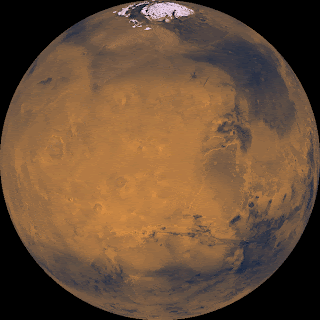ALH84001 is a 13,000 year old meteorite from Mars, found in 1984 in the Allan Hills Region of Antarctica. This sample contained nanometer-sized iron sulfide and iron oxide grains (which was theorized were produced by bacteria) and organic compounds known at polyaromatic hydrocarbons, or PHAs, which suggested the organic remains of Martian organisms. In November of 2009, NASA scientists commenced new research that used a new analysis technique, called ion beam milling, to study the iron grains. They concluded that there is "considerable evidence" that the nanocrystal iron grains were not the result of geology, which leaves biology as the real only other alternative.
Friday, December 18, 2009
Life and Death on Mars - The Sahara Desert may know...
ALH84001 is a 13,000 year old meteorite from Mars, found in 1984 in the Allan Hills Region of Antarctica. This sample contained nanometer-sized iron sulfide and iron oxide grains (which was theorized were produced by bacteria) and organic compounds known at polyaromatic hydrocarbons, or PHAs, which suggested the organic remains of Martian organisms. In November of 2009, NASA scientists commenced new research that used a new analysis technique, called ion beam milling, to study the iron grains. They concluded that there is "considerable evidence" that the nanocrystal iron grains were not the result of geology, which leaves biology as the real only other alternative.
Subscribe to:
Post Comments (Atom)




No comments:
Post a Comment